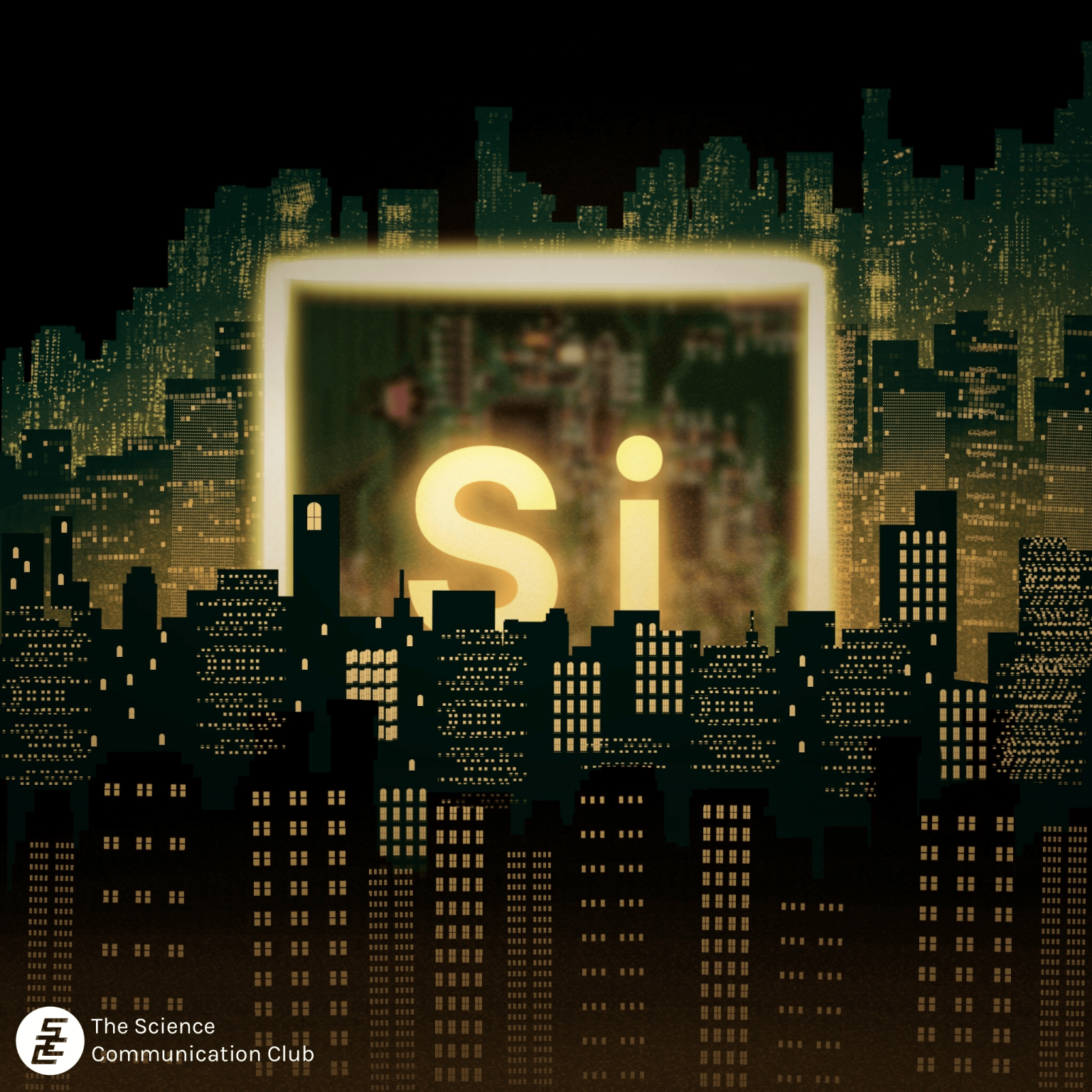Written by Dawei Wang
Illustrated by Maggie Huang
Semiconductors aren’t something you might think about very often, but you might’ve heard
about them in the news. Recently, there’s been a flash of news articles about the
semiconductors from Taiwan, and how the U.S. and China both want their hands on them. But
what are semiconductors, and what makes them so valuable that countries will fight over them?
The truth is, your life as you know it depends on them. They are key to how your electronics
function, whether that be your laptop, phone, tablet, or gaming PC. In fact, it’s because of
semiconductors that you’re able to read this!
How semiconductors work
Semiconductors are basically small devices that form the basis of microchips and conduct
electrical signals from one part to another. However, they only conduct specific signal
frequencies and not others, hence their name. You can think of the semiconductor as the “floor”
of the microchip, which has all of its other parts (such as transistors and diodes) sitting and performing work on top of it.1 This transmission of information allows semiconductors to perform a wide variety of tasks, like storing, processing, and searching information, allowing all your devices to function. Whenever you need to research a topic, text your friends, write down notes for your lectures, play games, or read articles like this one, you’re going to have to depend on semiconductors.
There’s a lot of work that goes into creating proper and efficiently functioning semiconductors. The first thing to consider is the construction material. Semiconductors are often made from
silicon: this is because it is durable, has good conducting and insulating properties, and is also the second most common element on Earth, making it readily available.
A second factor to consider is size. Electricity is created by the flow of electrons through a
conducting material. Having smaller semiconductors means electrons can travel shorter
distances and lose less energy, creating faster processing speeds with more efficient energy
consumption. Additionally, smaller semiconductors use less silicon. With extremely finely
processed silicon difficult to create, requiring a smaller amount of silicon means more efficient use and lower cost, while also making it easier to detect very small defects.

The technology race: where science meets politics
As citizens of a global, interconnected world, we can see how science affects the world around us. And the way that things are currently playing out, it seems like being able to easily access and use a cell phone will likely be harder over the years.
For starters, it is important to note that 22% of the world’s semiconductors, a significant portion of the industry, are manufactured by the Taiwanese company Taiwan Semiconductor
Manufacturing Company (TSMC).3 The semiconductor industry is so vital to Taiwan that in 2020, it made up 15% of Taiwan’s GDP.4 Since semiconductors are difficult to manufacture, most of the world is dependent on this company and their engineers to obtain semiconductors. The most advanced chips they have built are 5 nm chips, and TSMC is also looking at constructing 2 nm chips.
Currently, TSMC is not biased towards one country, and sells materials to both American and
Chinese companies. However, as the power struggle between China and the United States
increased over the years, the Trump administration sought to stop China from having access to
technology—technology that could be denied from them if China ever confronted Taiwan
militarily. Thus, the U.S. sanctioned China and banned the trade of certain materials, affecting plenty of electronic companies’ ability to obtain the semiconductors needed for building new devices.
This has not stopped China, which, to satisfy its burgeoning electronic industry, is seeking to
build its own industry of semiconductors. The reveal of Huawei’s new 7 nm chip in the Mate 60
Pro phone showed that the Chinese semiconductor industry was strong enough to stand on its
own.5 This came as a shock to American companies who underestimated China’s capabilities to build its own independent electronic industry.
Finally, due to Chinese claims over the nation of Taiwan, TSMC is now planning on expanding
with new factories in the U.S. to prevent their chips from falling into Chinese control. This also
occurred due to pressure from the U.S. government to establish onshore TSMC factories to
reduce their dependence on foreign sources, promote further government subsidization of tech
research, and maintain an edge in the technology race.
But for now, the world still gets most of its semiconductors from TSMC, meaning our devices
depend on this company to be properly built. However, the reliability of obtaining electronics, such as by taking a trip to the nearest Apple Store or Best Buy, is threatened by the wider political clashes that take place over these precious devices. Though the common image of the
21st century is a digitized, interconnected world, current events have shown technology as a force driving nations apart. If such events continue, and the U.S. and China’s scientific rivalry
grows, it will be our spending and consumption that will be affected.
Sources:
- Saint C, Judy Lynne Saint. 2018. integrated circuit | Types, Uses, & Function. In: Encyclopædia Britannica. [Accessed 2023 Oct 16] https://www.britannica.com/technology/integrated-circuit.
- Domingo G. 2020. Semiconductor basics : a qualitative, non-mathematical explanation of
how semiconductors work and how they are used. Hoboken, Nj, Usa Wiley. - Shattuck TJ. 2020. Stuck in the Middle: Taiwan’s Semiconductor Industry, the U.S. -China Tech Fight, and Cross-Strait Stability. Orbis. 65(1):101–117. doi:https://doi.org/10.1016/j.orbis.2020.11.005.
- Editor. 2021 Feb 16. Post-COVID-19 Taiwan in the Global Semiconductor Industry: The Context of the New U.S. Administration. Taiwan Insight. [accessed 2023 Oct 23] https://taiwaninsight.org/2021/02/16/post-covid-19-taiwan-in-the-global- semiconductor-industry-the-context-of-the-new-u-s-administration/.
- What Does Huawei’s Homemade Chip Really Mean for China’s Semiconductor Industry? Thediplomatcom. [accessed 2023 Oct 16] https://thediplomat.com/2023/09/what-does-huaweis-homemade-chip-really-
mean-for-chinas-semiconductor-industry